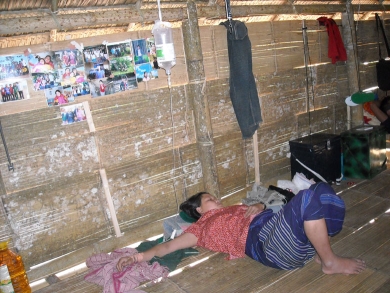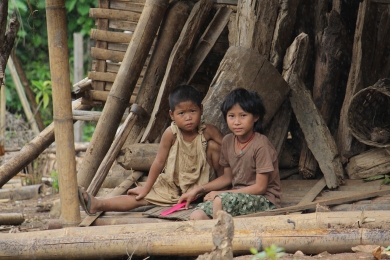“In the prospect of an international criminal court lies the promise of universal justice. That is the simple and soaring hope of this vision…We ask you . . . to do yours in our struggle to ensure that no ruler, no State, no junta and no army anywhere can abuse human rights with impunity. Only then will the innocents of distant wars and conflicts know that they, too, may sleep under the cover of justice; that they, too, have rights, and that those who violate those rights will be punished”. (Kofi Annan, United Nations Secretary-General 1997-2006)
A war crime is a grave breach of Geneva Conventions and other serious violation of international humanitarian law, or the laws of war, which can give rise to individual criminal responsibility under international law (see International Criminal Court). Under international law, crimes against humanity are acts committed as part of a widespread or systematic attack directed against any civilian population, with knowledge of the attack. These include murder, enslavement, forcible transfer of population, torture and rape, enforced disappearance of persons as well as persecution against any identifiable group or collectivity on political, racial, national, ethnic, cultural, or religious grounds. These definitions reflect customary international laws binding on all states, including Burma (see International Criminal Court).
The United Nations stipulates that recognition of the inherent dignity and of the equal and inalienable rights of all members of the human family is the foundation of freedom, justice and peace in the world. The Universal Declaration of Human Rights (UDHR) is a declaration adopted by the United Nations General Assembly on December 14, 1948 (see Universal Declaration of Human Rights, 1948). The UDHR represents the first global expression of rights to which all human beings are inherently entitled. It consists of 30 articles which have been elaborated in subsequent international treaties, regional human rights instruments, national constitutions and laws. While not a treaty, UDHR forms part of customary international law. Burma voted in favour of the Declaration on December 10, 1948.
The 1949 Geneva Conventions comprise four treaties and three additional protocols that establish international standards for the humanitarian treatment of victims of war (see Geneva Conventions of August 1949). They are at the core of international humanitarian law, regulating the conduct of armed conflict and seeking to limit its effects by protecting people who are not taking part in the hostilities or who are no longer participating in the hostilities. The articles of the Geneva Conventions define the wartime rights of prisoners, and establish protections for the wounded and for the civilians in and around a war zone. Article 3 sets minimum standards for conflict not of international character, including prohibitions of torture and cruel, humiliating or degrading treatment of those taking no active part in hostilities. Burma ratified the Geneva Conventions in 1992.
The Rome Statute of the International Criminal Court (ICC) provides a measurement tool for evaluating international criminal law violations. It is the treaty that established the ICC, and is considered an authority on questions of crimes against humanity and war crimes. The Rome Statute is an important source of most of the major principles in this area of law, including prohibitions on both war crimes and crimes against humanity (International Criminal Court, 2011). The Treaty was adopted at a diplomatic conference in Rome on July 17, 1998, and entered into force on July 1, 2002. Under the Rome Statute, the ICC can investigate and prosecute core international crimes, including genocide, crimes against humanity, war crimes, and the crime of aggression (Article 5), in situations where states are unable or unwilling to do so themselves. Such crimes are also violations of customary international law. As the ICC can investigate crimes only in states that have signed the Rome Statute (unless authorised by the UN Security Council), the majority of international crimes continue to go unpunished. Burma is a prime example.
ASEAN Declaration is the founding document of Association of Southeast Asian Nations (ASEAN), which was signed on August 8, 1967. While ASEAN adheres to the principle of non-interference in internal affairs, the ASEAN Charter calls on member states to respect human rights and adhere to the Rule of Law. The founding charter of ASEAN lists as one of its aims and purposes “to promote regional peace and stability through abiding respect for justice and the rule of law in the relationship among countries of the region and adherence to the principles of the United Nations Charter” (see ASEAN aims and purposes). Furthermore, according to the ASEAN Charter, one of the purposes of ASEAN is “to strengthen democracy, enhance good governance and the rule of law, and to promote and protect human rights and fundamental freedoms” (Article 1 (7), ASEAN, 2008, p. 4). Moreover, the aims of the ASEAN Intergovernmental Commission on Human Rights (AICHR) include “to uphold the right of the peoples of ASEAN to live in peace, dignity and prosperity” and “to uphold international human rights standards as prescribed by the Universal Declaration of Human Rights, the Vienna Declaration and Programme of Action, and international human rights instruments to which ASEAN Member States are parties” (AICHR, 2009, pp. 3-4). Despite the fact that grave human rights violations continue to go unchecked inside the country (see e.g. ND-Burma, 2013), Burma was handed the ASEAN chairmanship in October 2013 (Pomfret, J., October 2013). As the chair of ASEAN in 2014, Burma should arguably be required to act in accordance with the principles enshrined within the ASEAN charter.
There is also a framework of international human rights and humanitarian law that prohibits torture and other forms ill treatment. The Rome Statute defines torture as “the intentional infliction of severe pain or suffering, whether physical or mental, upon a person in the custody or under the control of the accused; except that torture shall not include pain or suffering arising only from, inherent in or incidental to, lawful sanctions”. Because the legal principles within this definition of torture have been recognised in previous international treaties, including the Geneva Conventions, State parties who are signatories of such prior treaties are obligated to adopt necessary and corresponding national legislations in conformity with these treaties; as a signatory, Burma is legally responsible for the creation of legislation that prohibits such acts. Torture is also included in the UDHR (Article 5), stating that “no one shall be subjected to torture or to cruel, inhuman or degrading treatment or punishment”.
Although Burma has not ratified the UN Convention against torture and Other Cruel, Inhuman or Degrading Treatment or Punishment (CAT), the convention has been widely accepted as part of customary international law, meaning that States are required to refrain from committing torture, even if they have not signed particular international treaties. CAT requires that there must be official involvement in, or consent to, the acts of torture in order for a State to be considered to have perpetrated the crime of torture. International law requires that States take affirmative steps to prevent torture, and that they act to provide justice and accountability should torture or ill treatment take place. The prohibition of torture is recognised as a peremptory norm, known as jus cogens, which means that at no time can torture be justified; not in a time of war; under threat of war; when facing internal instability; or in a state of emergency. Under these international standards, the prohibition of torture is absolute and binding on all nations at all time.
Non-discrimination is also a well-established fundamental human rights principle, explicitly referred to in the UDHR (Article 2), as well as in the Convention on the Rights of the Child and the Convention on the Elimination of All Forms of Discrimination against Women (CEDAW). States should ensure that persons belonging to minorities exercise fully and effectively all their human rights and fundamental freedoms without any discrimination and in full equality before the law.
The Convention on the Rights of the Child requires the ratifying states to respect and ensure the rights of each child, including ensuring that no child is subjected to torture or other cruel, inhuman, or degrading treatment or punishment. The government of Burma has publicly affirmed its legal commitment to protect children as evidenced by its ratification of the Convention on the Rights of the Child in August 1991, as well as its enactment of the Child Law in 1994 and rules of procedure in 2001. Burma has also ratified the Convention concerning Forced or Compulsory Labour of the International Labour Organisation (ILO) in 1955, and thus bound itself under international law to suppress the use of forced or compulsory labour in all its forms.
Updated October 27, 2014
Continue to War Crimes and Crimes Against Humanity- For an overview of existing documentation on serious human rights violations perpetrated by Burma’s military regime, and demonstrate that international crimes have been perpetrated in Burma with total impunity;
FIDH, ALTSEAN-Burma, & BLC (2009). BURMA/MYANMAR, International crimes committed in Burma: the urgent need for a Commission of Inquiry. A joint report by International Federation for Human Rights, ALTSEAN-Burma & Burma Lawyers‘ Council. www.fidh.org/IMG/pdf/bu08.pdf. Accessed December 17, 2013.
- For UN General Assembly Resolutions on Burma;
UN General Assembly Resolutions on Burma. ALTSEAN-Burma. http://www.altsean.org/Research/UN%20Dossier/UNGA.htm. Accessed December 17, 2013.
- For customary International Humanitarian Law;
Henckaerts, j-M. & Doswald-Beck, L. (2009). Customary International Humanitarian Law, Volume 1: Rules. International Committee of the Red Cross. Cambridge: Cambridge University Press.
- For a description of repressive laws in Burma;
ALTSEAN-Burma (2011). Burma’s Parliament: A Tool for Institutionalized Oppression. November 28, 2011.


